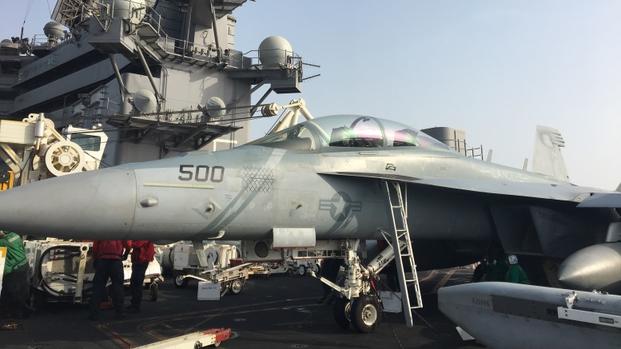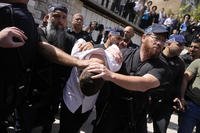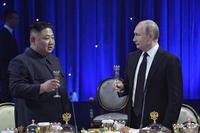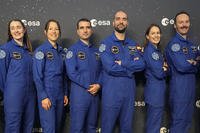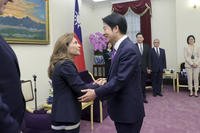ABOARD THE USS GEORGE H.W. BUSH, Persian Gulf -- While Navy F/A-18 Super Hornets deal death from the sky on Islamic State targets in Iraq and Syria, the EA-18 Growler is jamming enemy communications -- and potentially enemy drones too.
The Bush, which has been launching sorties in support of the counter-ISIS fight since early in the year, has four Hornet squadrons flying constant missions against the enemy. But also key to the fight are its squadron of Growlers and E-2C Hawkeye aircraft, which can detect airborne threats at distance and coordinate strikes from the air.
All fall under the command of Adm. Ken Whitesell, commander of the Bush carrier strike group. In an interview aboard the carrier, Whitesell said he believes the importance of the airborne Growler capability is underscored in the current fight with the emergence of small, commercially available unmanned aircraft systems as a weapon against coalition ground troops.
"You've probably been watching the unmanned aerial vehicles -- homemade, Amazon-delivered, radio-controlled," Whitesell said. "[ISIS militants can fly] homemade bombs over the top of forces and drop them by crashing the gyro-copters. So how can we attack those? The easiest way to do that is potentially to jam the signal and stop them flying."
The Growler, which is nearly identical to the Hornet, features wingtip ALQ-99 jamming pods and ALQ-218 radar warning receiver equipment. Growlers fly regular sorties in concert with Hornets, though it's much less easy to see the effect they have on the fight.
While Whitesell believes electronic warfare assets play a role in countering enemy radio-frequency capabilities, from small drone control to improvised explosive device detonation and more, it's in many aspects an article of faith.
"The Growlers is a difficult mission, because you never know if you're successful," Whitesell said. "If nothing happens bad, that community is always happy to go, 'OK, nothing bad happened, but I don't know for sure that I was a part of that. So let's just keep doing what we're doing.' "
Elsewhere on the ship, the twin-turboprop Hawkeye aircraft, with its distinct disc-like rotating radar dome on top, faces a changing role as the fight against ISIS enters its fourth year.
The operations officer for Carrier Airborne Early Warning Squadron 124, aboard the Bush, said Hawkeyes still get airborne any time the Hornets fly missions, facilitating communication with ground commands and providing advanced threat detection for the protection of the aircraft. The officer, Lt. Klein, asked to be identified only by last name for security reasons.
"I know them by their voices; I know who they are," Klein said of the Hornet pilots his squadron partners with and protects. "I think the popular conception of an F/A-18 is, they're out there alone and unafraid. But somebody's out there with them, and that's generally us."
Klein, who previously deployed to the region in 2014, at the start of the ISIS fight, said the austere nature of the campaign then meant the aircraft were heavily depended upon to provide command and control, and assistance translating the intent of the commander on the ground to the pilots in the air.
Now, he said, the ground battle management system is more mature, and the need for the Hawkeye is less intense. The squadron remains busy, but places more emphasis on providing protection and support to the carrier, another key element of its mission.
"It's not quite like our last deployment, where we'd be busy every day, and at the end of a four-hour mission, be like, 'Wow, what happened,' " Klein said. "But again, we're out there to be the people that [the Hornet squadrons] trust to call if they have any issues. We're on call for them if they need something."
-- Hope Hodge Seck can be reached at hope.seck@military.com. Follow her on Twitter at @HopeSeck.
